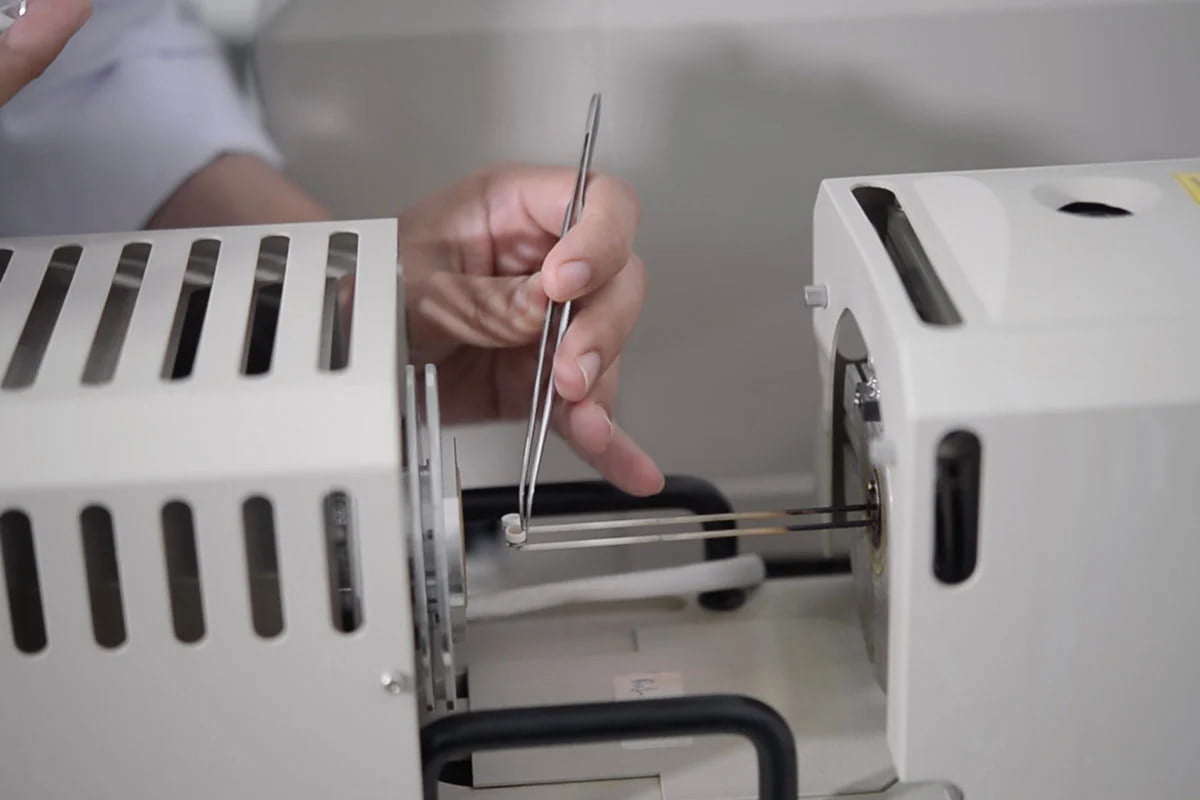
For polymeric materials, like Poly(methyl methacrylate), the glass transition temperature (Tg) plays an important role in making them suitable for a variety of applications. They are capable of governing the both mechanical and physical characteristics of them. However, the thermal events are not fully understood at a molecular level. With a greater understanding of this process, scientists may begin to uncover new ways of uniquely improving the performance of these materials.
Poly(methyl methacrylate) (PMMA), is a thermoplastic that is cost effective to mass produce and is widely utilised instead of glass for its light transmittance, durability and excellent resistance to chemical and weather corrosion. For these reasons, they are used widely across biomedical technology, dental, cosmetic nails, rheology modifiers and other applications.
The main disadvantage of PMMA is its relatively low glass transition temperature (Tg) of around 105°C, making it an unsuitable material choice for applications such as optical equipment.
However, a study from the Polymer Research Institute at New York’s Polytechnic University, High Glass Transition Temperatures of Poly(methyl methacrylate) Prepared by Free Radical Initiators (2008), has proven that PMMA prepared using free radical initiators has a higher Tg of between 120°C and 128°C. This represents an improvement greater than 20%.
Using free radicals to alter Tg
Copolymers and chain transfer agents are commonly used to increase and decrease the Tg value of PMMA. This new paper has demonstrated that other initiators can also be used for this purpose, and free radicals are a viable alternative for increasing the Tg of PMMA by as much as 23°C.
Furthermore, the study demonstrated that polymerisation of MMA using different initiators, with different moles of initiator and a range of polymerisation conditions resulted in different physical properties. Excitingly, these findings could initiate research into entirely new applications for PMMA.
Which free radicals were investigated?
For each test, a typical polymerisation procedure was followed, whereby an initiator and MMA were placed into a glass polymerisation tube. Each tube was then subjected to repeated freeze-pump-thaw cycles while sealed under vacuum.
Polymerisation was carried out in a heated bath and once the conversion of MMA had reached the required range of between 90% and 98%, the contents of each tube was dissolved in chloroform before being precipitated from methanol with vigorous stirring.
The purified polymer samples (recovered 90-95 wt%) were dried under vacuum at 60°C for 48 hours.
Which free radical increased Tg the most?
The results demonstrated that di-tert-butyl peroxide (DTBP) radicals exhibited Tg approximately 20°C higher than the other free radical initiators in the study, and 15°C-23°C higher than the Tg on commercially available PMMA.
The researchers also concluded that polymerising MMA with certain free radicals would produce PMMA with a lower Tg, but a higher viscosity than that of the higher Tg PMMA. This proves that when MMA is polymerised with DTBP, branch polymers are produced, decreasing the segmental mobility of the chain which, in turn, increases its Tg value.
PMMA for high Tg applications
For many industries, there is increased pressure to improve efficiencies, lower costs and improve performance, and material selection is one method of delivering against these criteria. To achieve this, research focusing on improving the inherent capabilities of proven materials, so that they can be used for a wider range of applications, is becoming increasingly important.
The discovery that preparing PMMA using different free radical initiators can alter the Tg, and physical properties, broadens the use of this durable thermoplastic glass alternative. Further research is required, but the findings suggest that applications such as optical engineering and manufacturing will benefit from the light transmittance and resistance of PMMA, owing to improved Tg and the cost efficiencies of mass production.